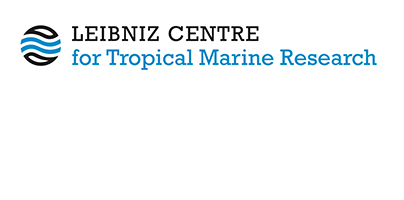Micronutrient levels of global tropical reef fish communities differ from fisheries capture.
Waldock, Conor, Maire, Eva, Albouy, Camille, Andreoli, Vania, Beger, Maria, Claverie, Thomas, Cramer, Katie L., Feary, David A., Ferse, Sebastian C. A.  ORCID: https://orcid.org/0000-0003-0930-5356, Hoey, Andrew, Loiseau, Nicolas, MacNeil, M. Aaron, McLean, Matthew, Mellin, Camille, Ahouansou Montcho, Simon, Palomares, Maria Lourdes, de la Puente, Santiago, Tupper, Mark, Wilson, Shaun, Velez, Laure, Zamborain‐Mason, Jessica, Zeller, Dirk, Mouillot, David and Pellissier, Loïc
(2024)
Micronutrient levels of global tropical reef fish communities differ from fisheries capture.
People and Nature
.
DOI https://doi.org/10.1002/pan3.10736.
ORCID: https://orcid.org/0000-0003-0930-5356, Hoey, Andrew, Loiseau, Nicolas, MacNeil, M. Aaron, McLean, Matthew, Mellin, Camille, Ahouansou Montcho, Simon, Palomares, Maria Lourdes, de la Puente, Santiago, Tupper, Mark, Wilson, Shaun, Velez, Laure, Zamborain‐Mason, Jessica, Zeller, Dirk, Mouillot, David and Pellissier, Loïc
(2024)
Micronutrient levels of global tropical reef fish communities differ from fisheries capture.
People and Nature
.
DOI https://doi.org/10.1002/pan3.10736.
|
Text
Ferse.pdf - Published Version Available under License Creative Commons: Attribution 4.0. Download (8MB) |
Abstract
1. The exceptional diversity of shallow-water marine fishes contributes to the nutrition of millions of people worldwide through coastal wild-capture fisheries, with different species having diverse nutritional profiles. Fishes in ecosystems are reservoirs of micronutrients with benefits to human health. Yet, the amount of micronutrients contained in fish species on coral reefs and in shallow tropical waters is challenging to estimate, and the micronutrients caught by fisheries remain uncertain.
2. To assess whether micronutrient deficiencies could be addressed through specific fisheries management actions, we first require a quantification of the potentially available micronutrients contained in biodiverse reef fish assemblages. Here, we therefore undertake a broad heuristic assessment of available micronutrients on tropical reefs using ensemble species distribution modelling and identify potential mismatches with micronutrients derived from summarising coastal fisheries landings data.
3. We find a mismatch between modelled estimates of micronutrients available in the ecosystem on the one hand and the micronutrients in small-scale fisheries landings data. Fisheries had lower micronutrients than expected from fishes in the modelled assemblage. Further, fisheries were selective for vitamin A, thus resulting in a trade-off with other micronutrients. Our results remained unchanged after accounting for the under-sampling of fish communities and under-reporting of small-scale fisheries catches—two major sources of uncertainty.
4. This reported mismatch indicates that current estimates of fished micronutrients are not adequate to fully assess micronutrient inventories. However, small-scale fisheries in some countries were already selective towards micronutrient mass, indicating policies that target improved access, distribution and consumption of fish could leverage this existing high micronutrient mass.
5. Enhanced taxonomic resolution of catches and biodiversity inventories using localised species consumption surveys could improve understanding of nature-people linkages. Improving fisheries reporting and monitoring of reef fish assemblages will advance the understanding of micronutrient mismatches, which overall indicate a weak uptake of nutritional goals in fisheries practices.
6. The decoupling between micronutrients in ecosystems and in fisheries catches indicates that social, economic, and biodiversity management goals are not shaped around nutritional targets—but this is key to achieve a sustainable and healthy planet for both people and nature.
| Document Type: | Article |
|---|---|
| Programme Area: | PA1 |
| Research affiliation: | Science Management > Office for Knowledge Exchange |
| Refereed: | Yes |
| Open Access Journal?: | Yes |
| DOI: | https://doi.org/10.1002/pan3.10736 |
| ISSN: | 2575-8314 |
| Date Deposited: | 13 Jan 2025 16:14 |
| Last Modified: | 13 Jan 2025 16:14 |
| URI: | https://cris.leibniz-zmt.de/id/eprint/5530 |
Actions (login required)
 |
View Item |





 Tools
Tools Tools
Tools